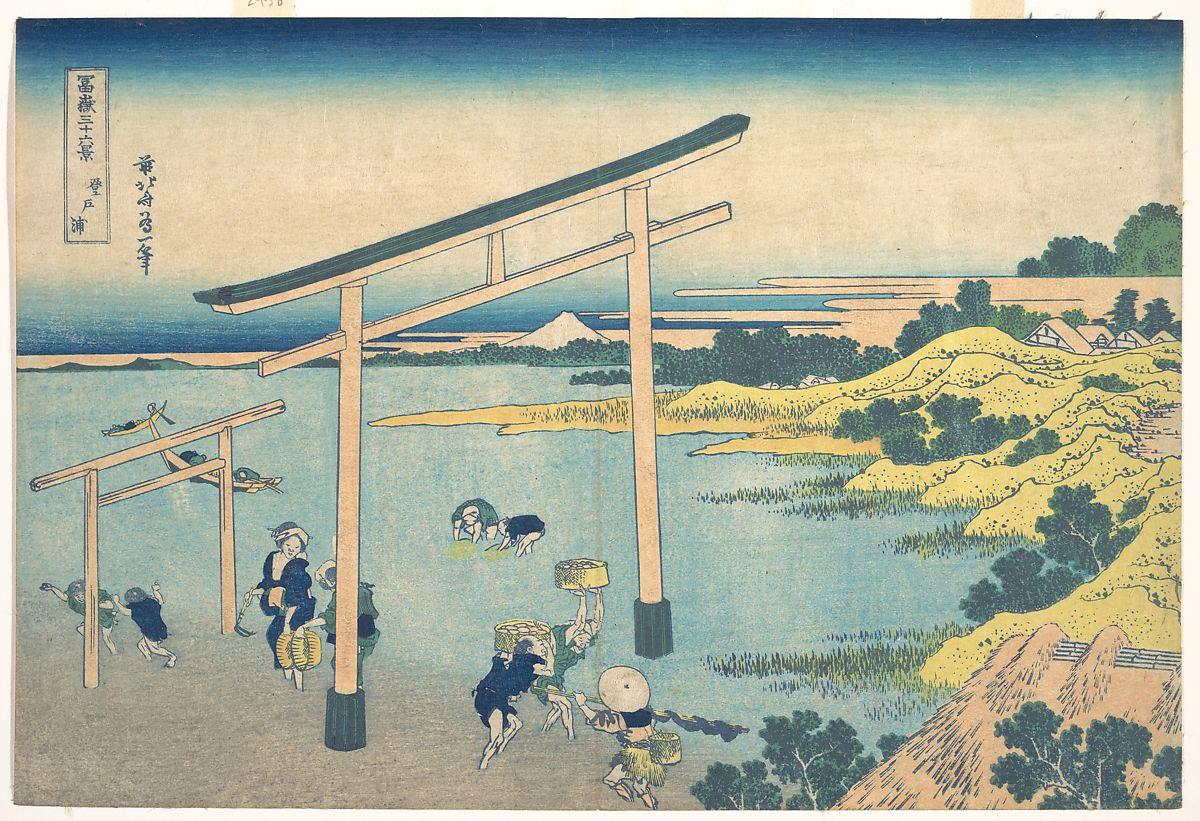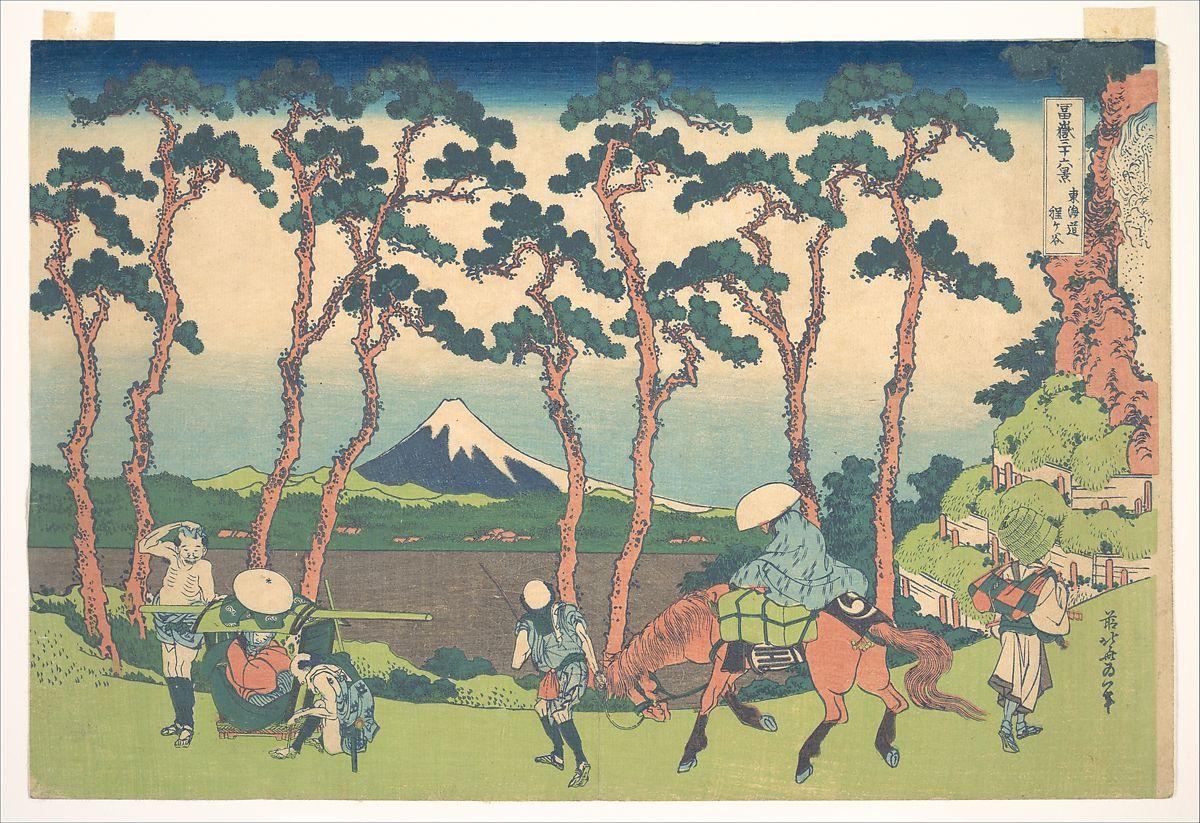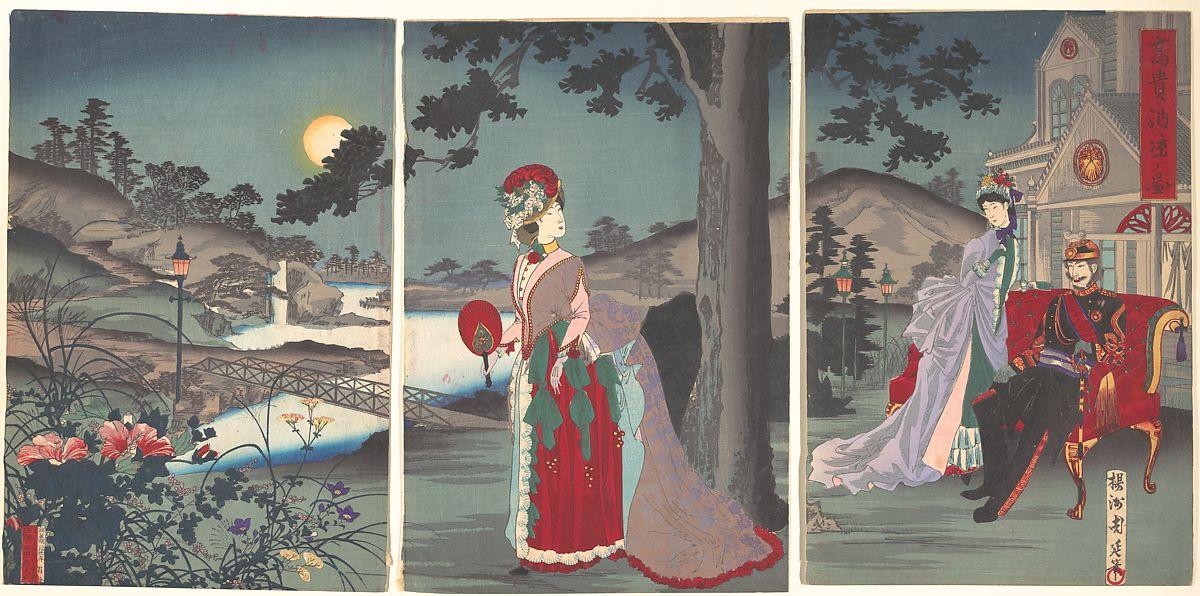Description
Thirty-Six Views of Mount Fuji is the most notable series of paintings by Katsushika Hokusai. As the name suggests, the initial publication included thirty-six images, each portraying Mount Fuji from different viewpoints and in various conditions. The chosen artworks for the current assignment are Noboto Bay (登戸浦 – Noboto Ura) and Hodogaya on the Tōkaidō (東海道保土ケ谷 – Tōkaidō Hodogaya).
The images present Mount Fuji from two unique perspectives with differences in composition, meaning, and iconography. The dimensions vary slightly – Noboto Bay is a 9 3/4 x 14 3/8 in. painting, while Hodogaya is 10 1/8 x 15 in. Both artworks were created as woodblock prints in the Ukiyo-e style; however, they were also reproduced using ink and color on paper.
Katsushika Hokusai completed the paintings in Japan during the Edo period (1615-1868) between 1830 and 1832. The artworks include text on the print – the individual titles and the name of the art series. Lastly, the accession numbers are JP2958 and JP2562 for Noboto Bay and Hodogaya.
Comparison
Style
There are many similarities between the two images, as they are united by the same author and art collection, which share the same theme and focal point (both artworks are presented at the end of the text). Namely, the art style of Katsushika Hokusai, in the tradition of Ukiyo-e, features many recognizable patterns, including blue and green palettes, unique depictions of human figures, and an emphasis on nature. These similarities are particularly noticeable in the representation of landforms. The sky in both artworks features a gradient of blue and white, with darker hues of blue predominating in the upper part of the print. Moreover, the depiction of trees and grass is similar, a fact that can be attributed to Katsushika Hokusai’s unique style.
Format and Composition
Consequently, the horizontal format is another similarity between the two images. This alignment suggests further similarities between Noboto Bay and Hodogaya in terms of compositional elements. Both images follow a standard foreground, middle ground, and background landscape composition. Although the former two are different, Mount Fuji is the central background element in both artworks. This composition style is consistent throughout the whole art collection, demonstrating the extreme significance of Mount Fuji for Katsushika Hokusai and Japanese culture.
It means that, regardless of the foreground and middle ground, Mount Fuji is always present in the background, symbolizing Japan. Moreover, it showcases Mount Fuji’s immense dimensions, demonstrating that it can be seen from various parts of Japan. It is an immovable giant that oversees Japan, and this message is very distinct in both artworks. As a result, Hokusai transparently conveys that Mount Fuji is an integral part of Japan, playing a crucial role in the daily routine of the Japanese people and their religious history.
Contrast
Iconography
The primary difference between the two artworks is the iconography in the foreground and middle ground. Noboto Bay and Hodogaya convey different situations—shellfish gathering and traveling. Although both activities are relatively routine, they have distinct implications. The iconography in Noboto Bay is deeply connected to the religious origins of Mount Fuji. The Torii gate frames the landmark, one of Japanese culture’s most notable artificial sacred objects.
Hence, Hokusai establishes the link between religion, culture, the daily lives of Japanese people, and Mount Fuji. Hodogaya has a distinct approach to iconography, with a greater emphasis on nature. The foreground and middle ground are filled with greenery, pine trees, and water bodies, creating a beautiful landscape. In this image, Hokusai emphasizes the bond between humans (represented by traveling merchants) and nature to illustrate the importance of harmony. As a result, iconography serves as the primary contrast that highlights the connection between Mount Fuji and various elements.
Foreground and Middle Ground
Moreover, the distinction between foreground and middle ground varies slightly. Noboto Bay features a seamless transition between the foreground (fish gatherers and the front of the Torii gate) and the middle ground (additional gatherers and the lake). However, in Hodogaya, the transition is very distinct, which becomes even more noticeable through the depiction of the road.
The foreground with traveling merchants creates a fascinating narrative. However, the middle ground with pine trees serves as a distinguishable transition, which Hokusai further highlights through the intense orange color, separating the foreground from the background. As a result, the image has three highly distinct composition orientations. Lastly, although people are represented relatively similarly, the differences in their roles and occupations create a notable difference in the environment of the two images.
Reflection
Although Noboto Bay and Hodogaya on the Tōkaidō appear similar at first glance, they convey distinct perspectives. The artworks contain an immensely rich iconography that tells fascinating stories about the connection between Mount Fuji and Japan. While it may seem that thirty-six images for one landmark are redundant, each of the prints provides a unique setting and scenario, highlighting the utmost significance of Mount Fuji in Japanese culture. Ultimately, my reaction to the artworks and the general style of Hokusai and Ukiyo-e is overwhelmingly positive, and the images make me want to learn more about Japanese culture.
Comparison with Yoshu Chikanobu’s Artwork
Historical Context
The artwork Nobility in the Evening Cool by Yoshu Chikanobu drastically differs from the described pieces by Hokusai. The colors, depiction of human figures, and even cultural context create a distinct impression in Chikanobu’s painting. Many of these differences emerge from the historical period and associated styles in Japanese art. Namely, Hokusai completed his prints between 1830 and 1832 during the Edo period, while “Nobility in the Evening Cool” dates to 1887, during the Meiji period.
While the painting still adheres to the traditional principles of Japanese art, Chikanobu’s art draws more inspiration from Western traditions. The research shows that Meiji period art reflected Japan’s efforts to open up to the world and adopt traditions from other countries (“The Art and Antiques”). In this sense, the differences between Nobility in the Evening Cool and Hokusai’s prints can be explained by the ongoing changes in Japanese art during the Meiji period.
Iconography
The iconography supports this theory due to the Western influence on Nobility in the Evening Cool. The nobles are wearing fancy dresses with elements of Western styles. For instance, the floral headdresses worn by the women in the artwork and the Western-style jacket worn by the man transparently reflect Western fashion. The nobility wore these clothes daily, and this trend emerged only in the Meiji period due to cultural exchange (“The Art and Antiques”).
Style
Moreover, the overall style of Nobility in the Evening Cool is significantly more realistic in depicting both human figures and landscapes. It is another reference to Western art, where realism was a more established art tradition than in Japan. At the same time, several similarities remain, including the horizontal format and overall composition. In this structural sense, Chikanobu’s art bears resemblance to Hokusai’s art pieces.
In summary, the compared works of art differ significantly primarily due to the Western influence on Japanese traditions during the Meiji period. However, Nobility in the Evening Cool still maintains some of the elements seen in Hokusai’s iconic prints.
Works Cited
Metropolitan Museum of Art (a). “Noboto Bay (Noboto no Ura), from the Series Thirty-six Views of Mount Fuji (Fugaku sanjūrokkei).” N.d. Web.
Metropolitan Museum of Art (b). “Hodogaya on the Tōkaidō (Tōkaidō Hodogaya), from the Series Thirty-six Views of Mount Fuji (Fugaku sanjūrokkei).” N.d. Web.
Metropolitan Museum of Art (b). “Nobility in the Evening Cool (Koki nōryō no zu).” N.d. Web.
Appendix


